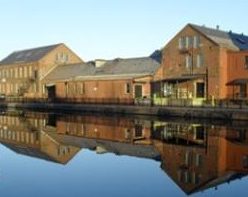This is a walking tour of Calvary Cemetery of Chicopee and St Matthew Cemetery of Springfield.
stop 1 – Cross
Daprato Rigali Company of Chicago made this cross and the statues in front of it. LINK They are a specialty firm that constructs religious implements. Their insignia are on the many items here on their bases – cross and 3 statues.
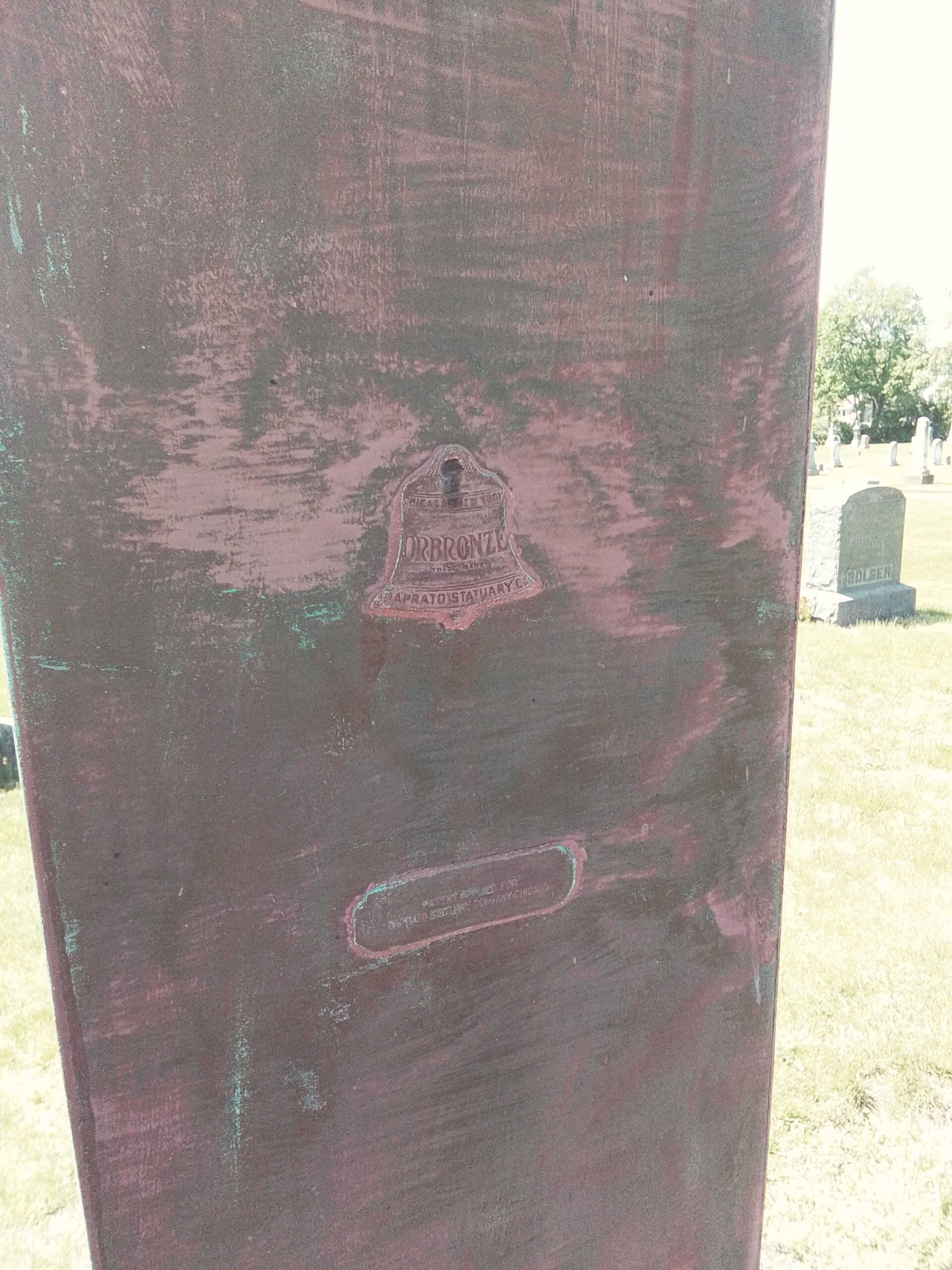
stop 2 – nuns
The nuns of the Holy Name School are buried there both in front of the cross and behind the cross.
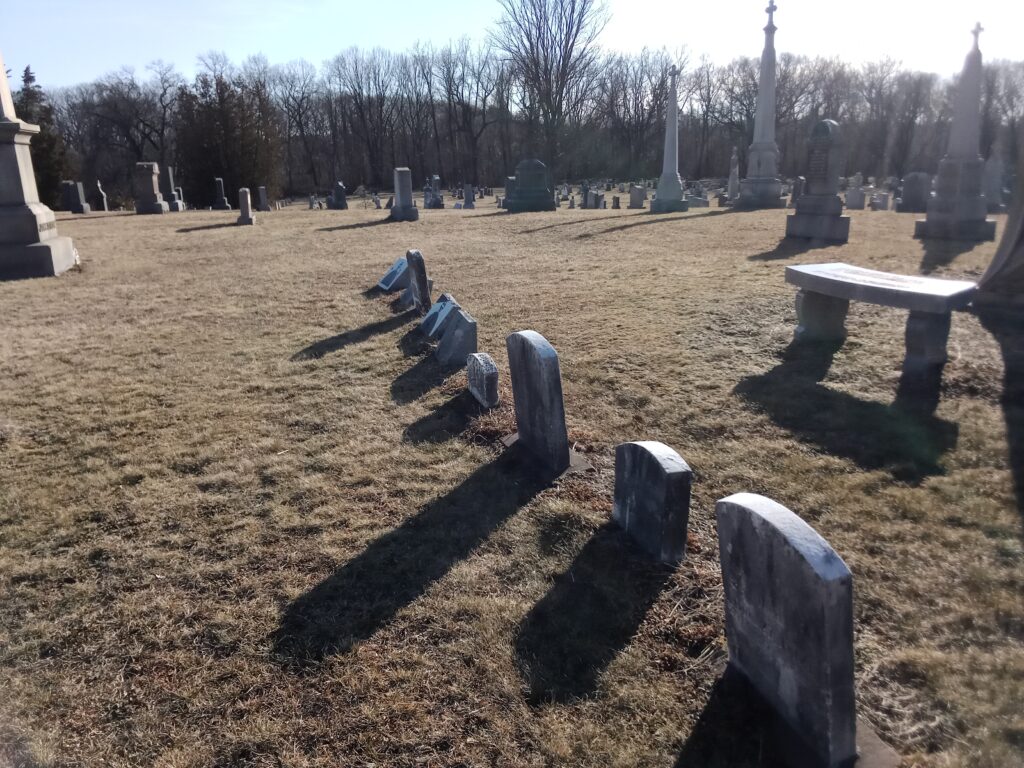
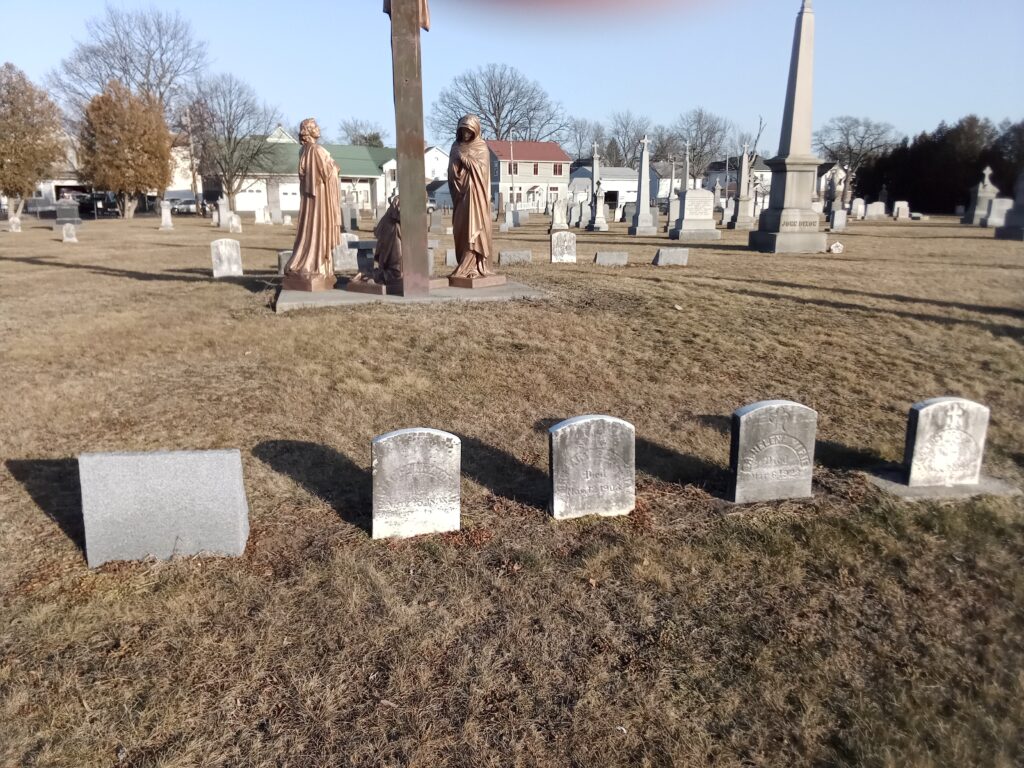
stop 3 – oldest burials with stones
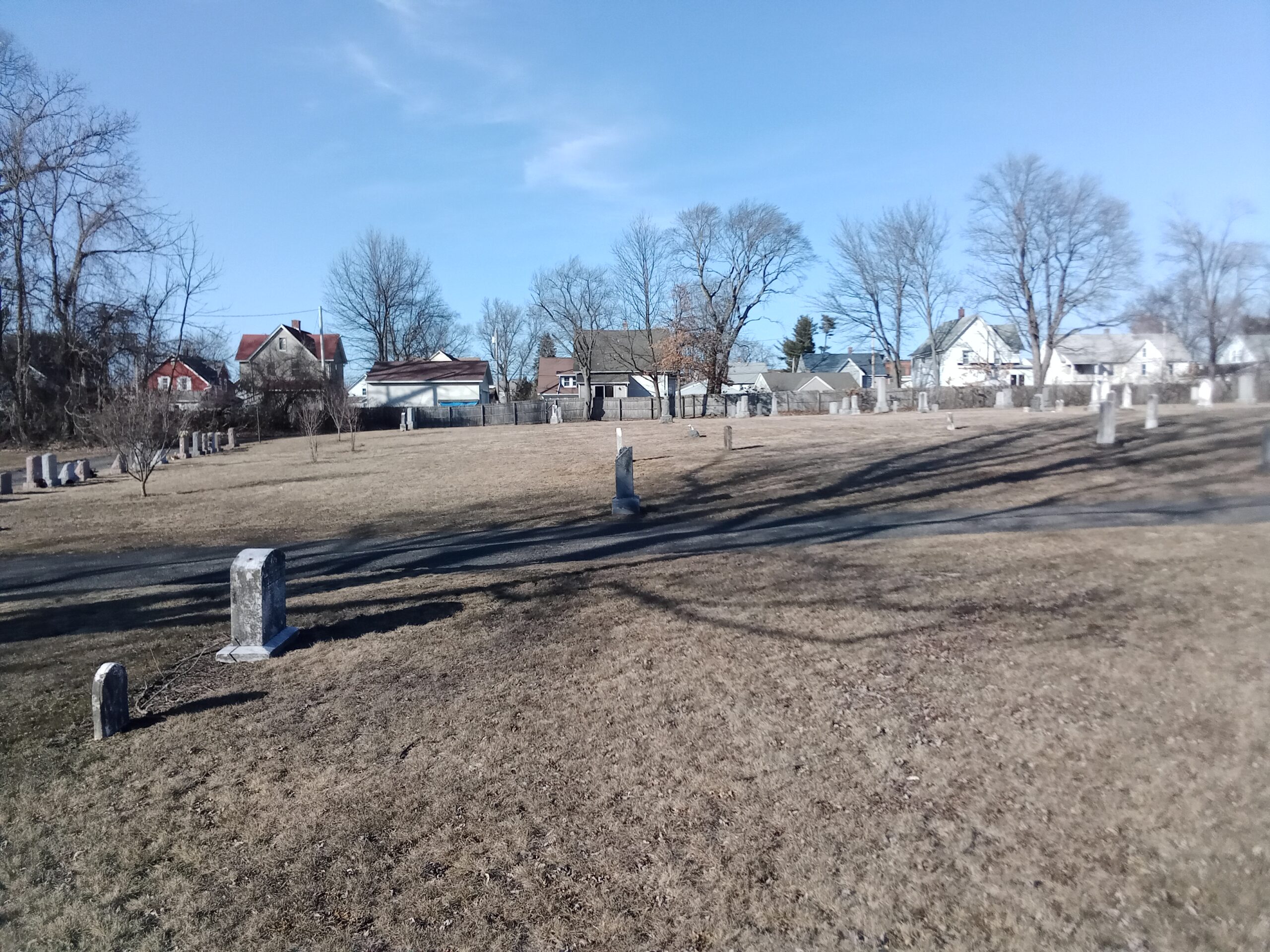
In the land in front of the work shed, there are many burials but few stones. The lack of gravestones is because there were wooden crosses here at one time but they have eroded away. The families were too poor to purchase stones.
In the Chicopee town death records of the 1850s, a burial in Calvary Cemetery was denoted as Chicopee Roman Catholic Cemetery (often Chic Rom Cath Cem) and a burial in Saint Matthews Cemetery was denoted as Roman Catholic Cemetery (often Rom Cath Cem).
stop 4 – Faustino Estanislau
Faustino is buried in the woods behind the main body of the cemetery. His daughter was later buried alongside him. Faustino was a suicide and the Catholic church did not allow a burial of a person that commit suicide within the consecrated portion of the cemetery. Thus he is in the woods. His wife and two very young children moved back to Portugal after this. His children would return to New England as adults. His daughter is buried with her father here.

stop 5 – John Conlin
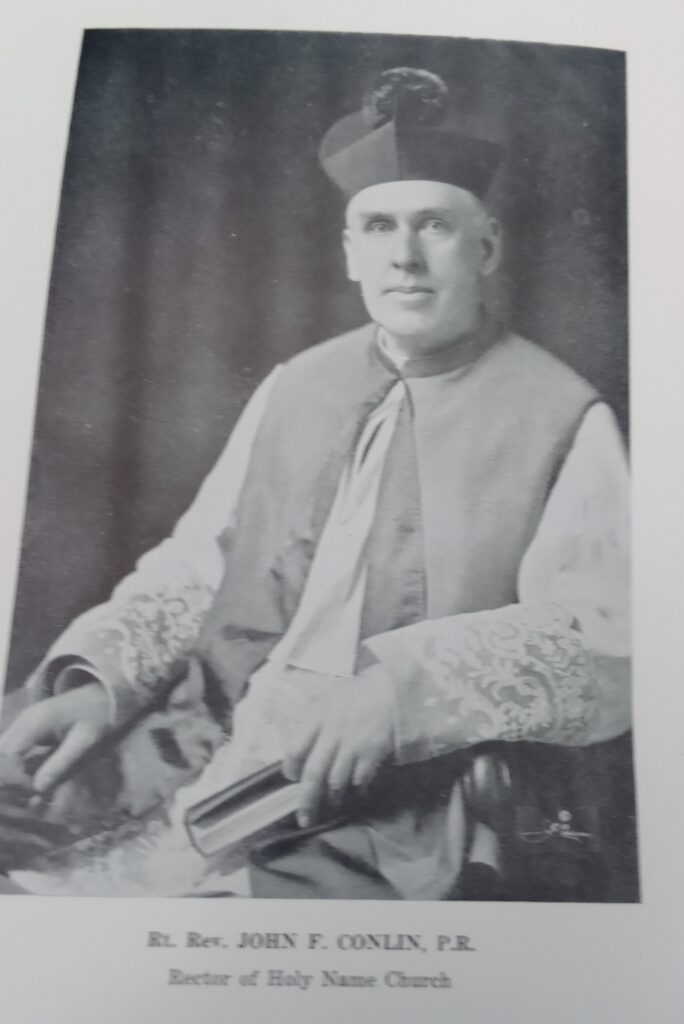
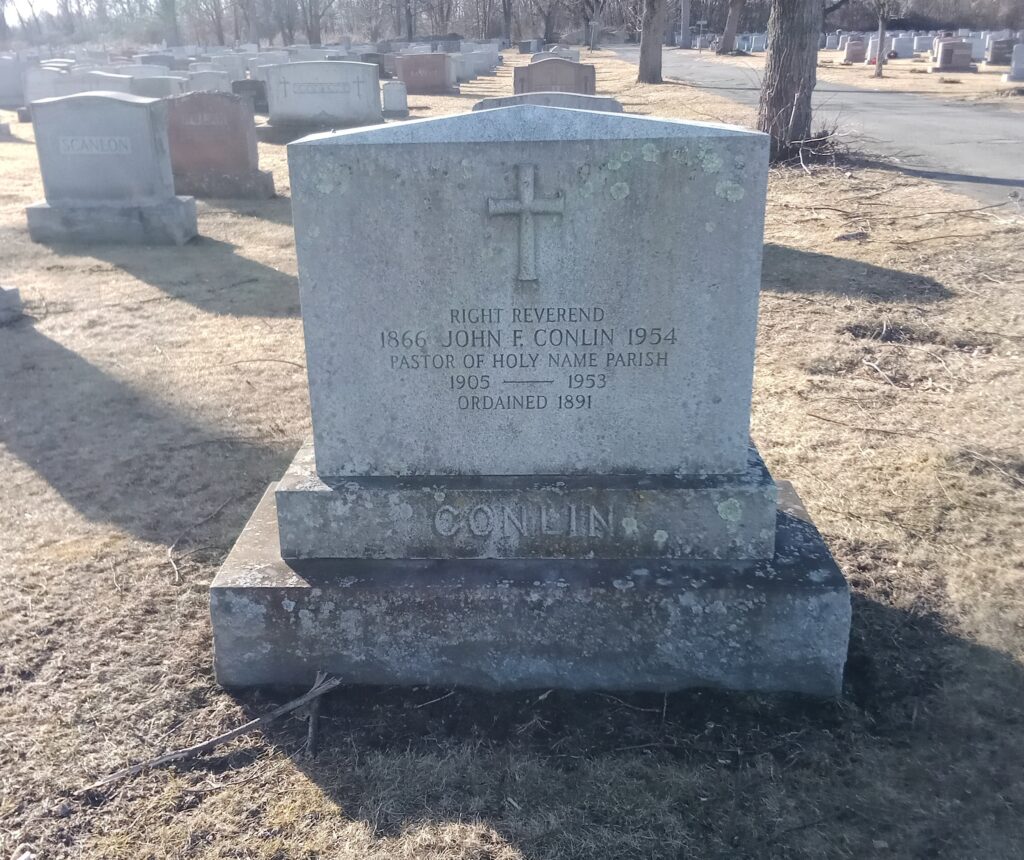
John Conlin was the pastor of the Holy Name Church of Chicopee from 1905 to 1953. 48 years is the longest that I have seen of a pastor serving one church in the Pioneer Valley.
stop 6 – Frank Szot
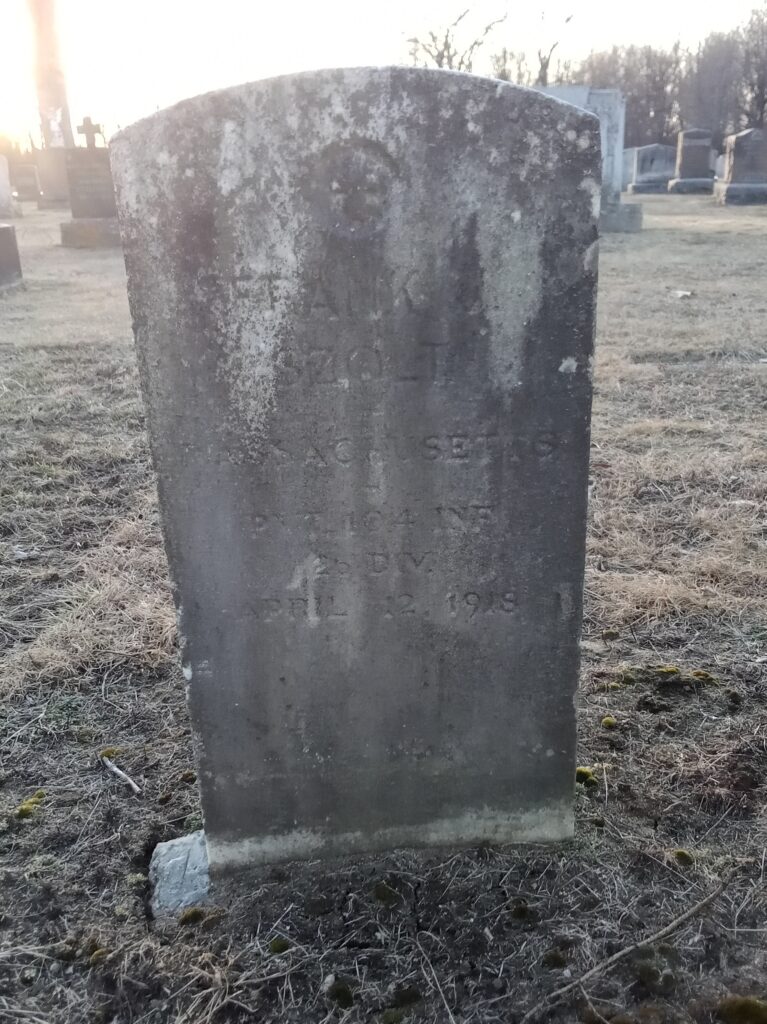
Frank Szot was the first resident of Chicopee that died in WW1. He died in Apremont France with the Yankee Division in 1918.
stop 7 – potters field
To the back left, there are two adjacent potters fields. The back one is called All Saints Cremation Garden. This is filled with paupers’ graves. Any stones that once were here in this section have been moved to the Holy Innocence section. This works as a cremation area since the bodies are 6 feet deep and the cremation urns are 1 foot deep. The plots were never owned by the families of the deceased but rather by the diocese. Findagrave
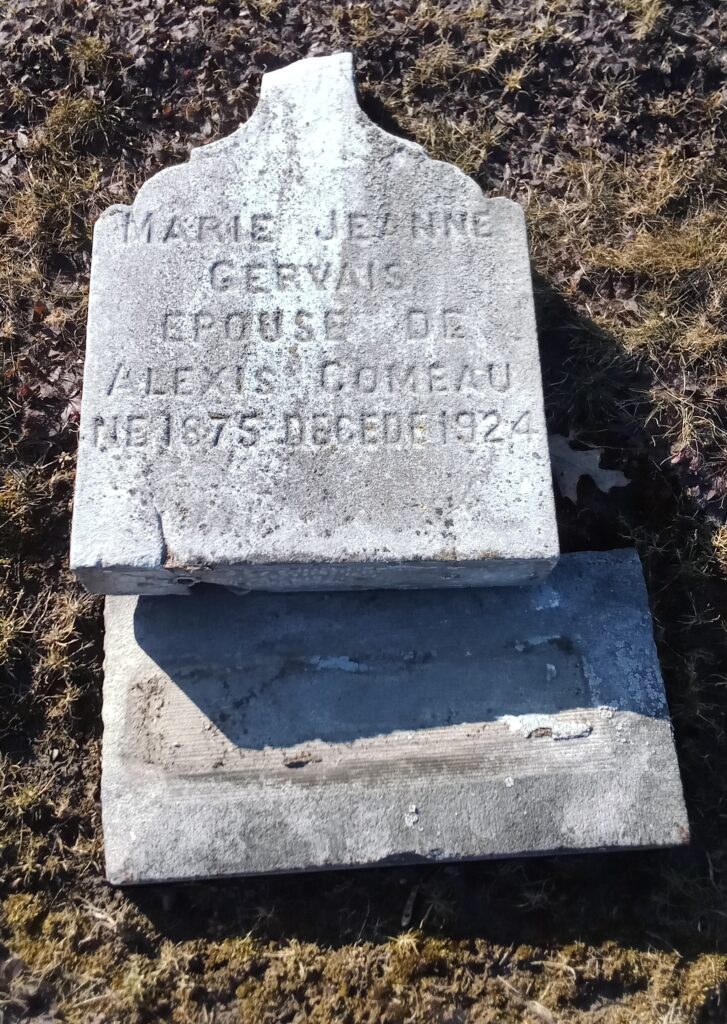
stop 8 – babies section
Once this section was only for non-baptized babies. Since this was the diocesan cemetery for Catholics in all of Western Massachusetts, there are many babies here. This section was never consecrated on purpose so that the non-baptized could be buried here. There are stones for adults here now but their bodies are not in this section. The church want to add a cremation section to the cemetery. This was added into the potter’s field section in the section in front of this one. Any stones that once were here in this section have been moved to the Holy Innocence section.
stop 9 – Fr Frederick Bonneville
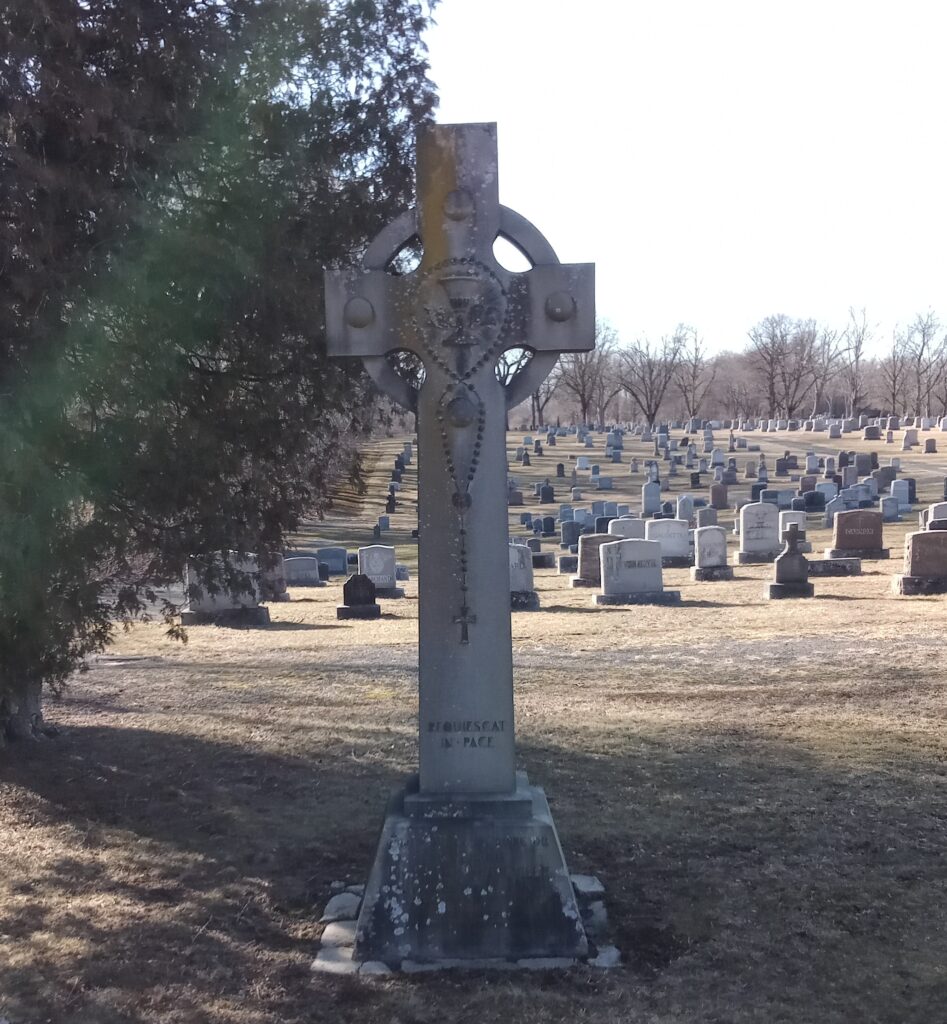
Frederick Bonneville was the pastor of the Assumption Church in Chicopee from 1893 to 1928. He is the only pastor of that church buried in this cemetery.
stop 10 – layout of the cemetery
MAP
stop 11 – gates
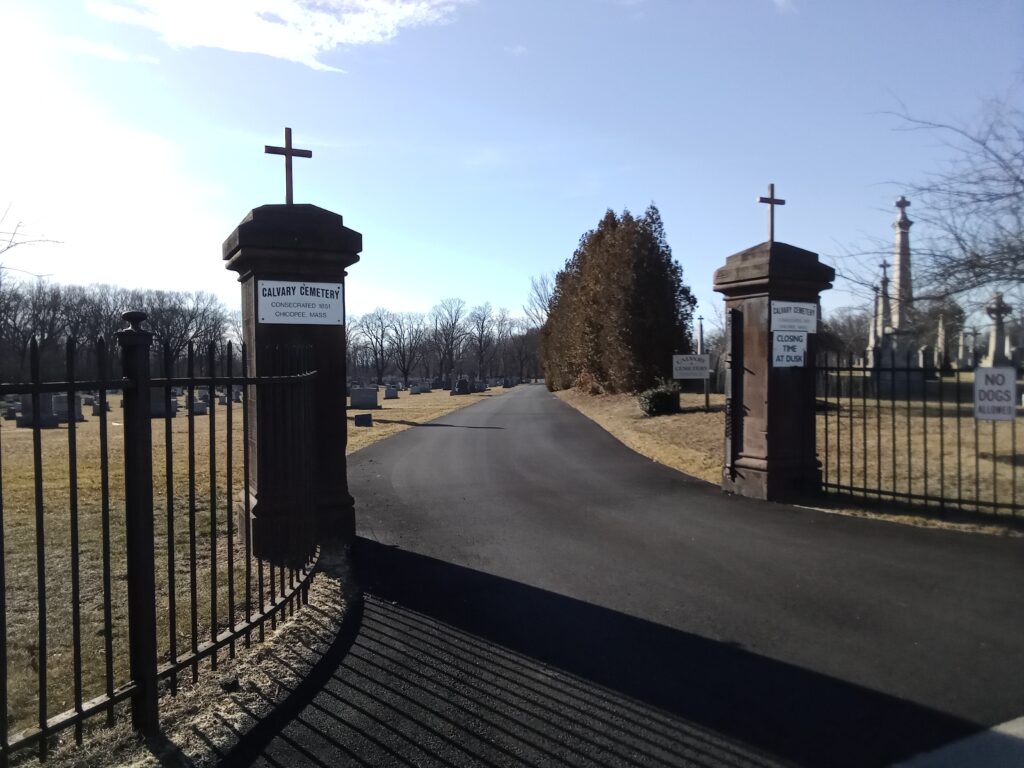
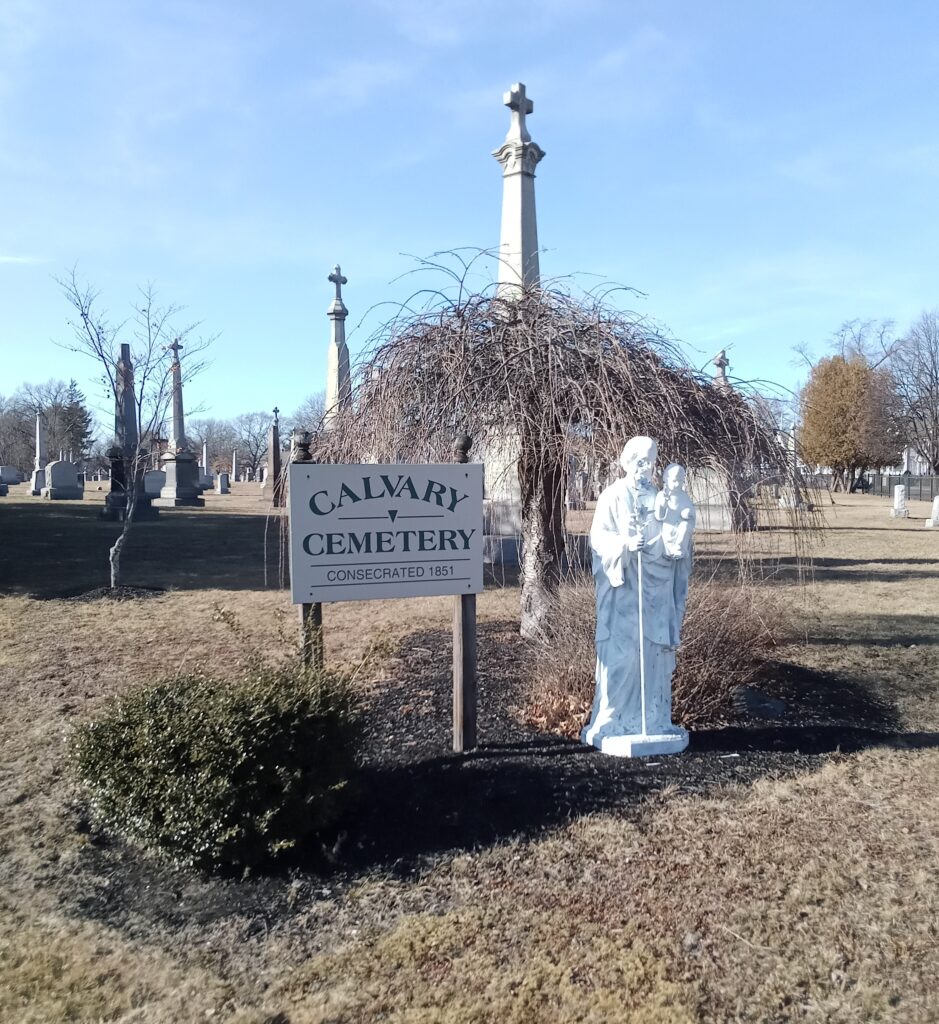
St Matthew’s Cemetery – LINK
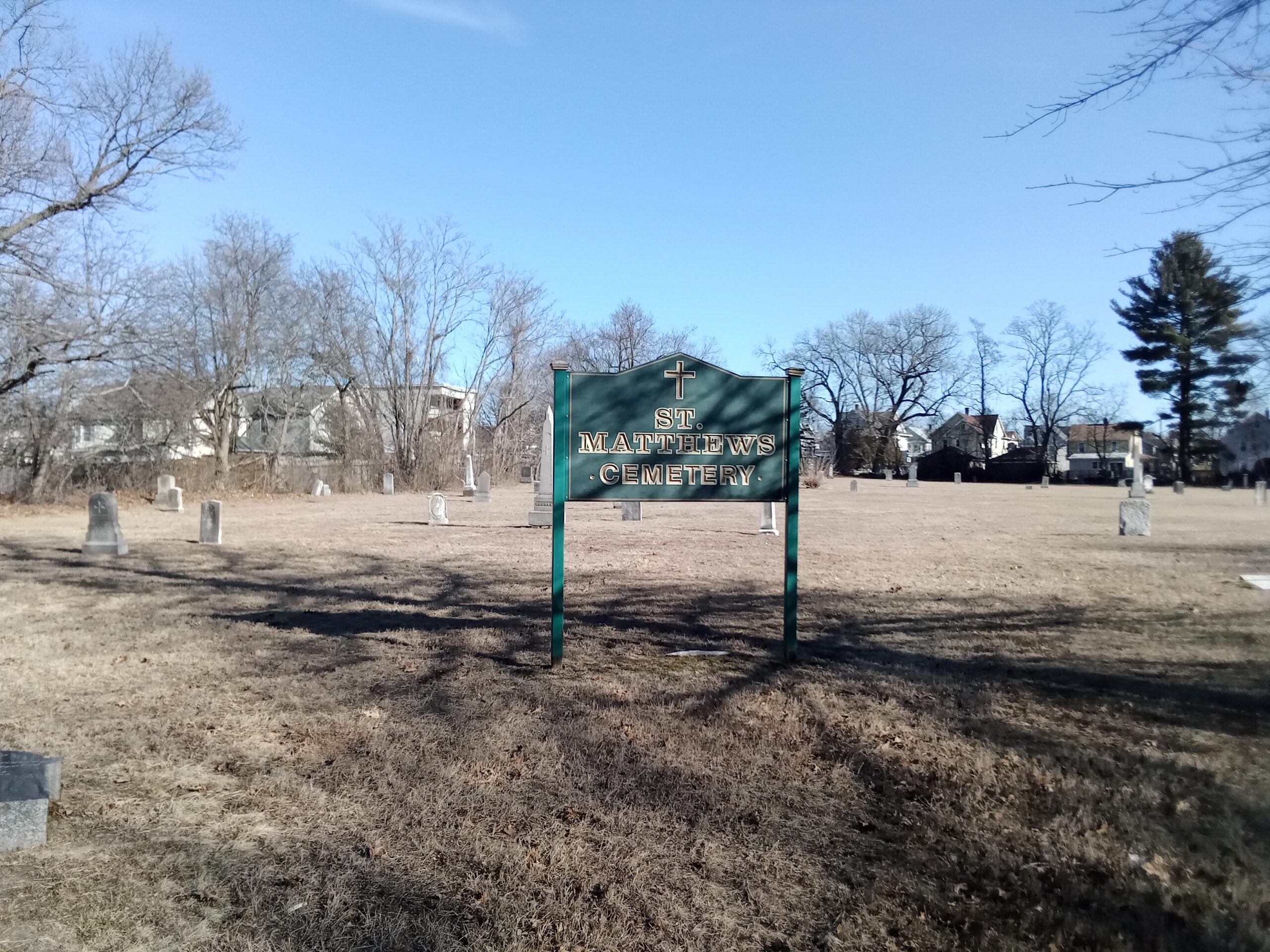
stop 1 –
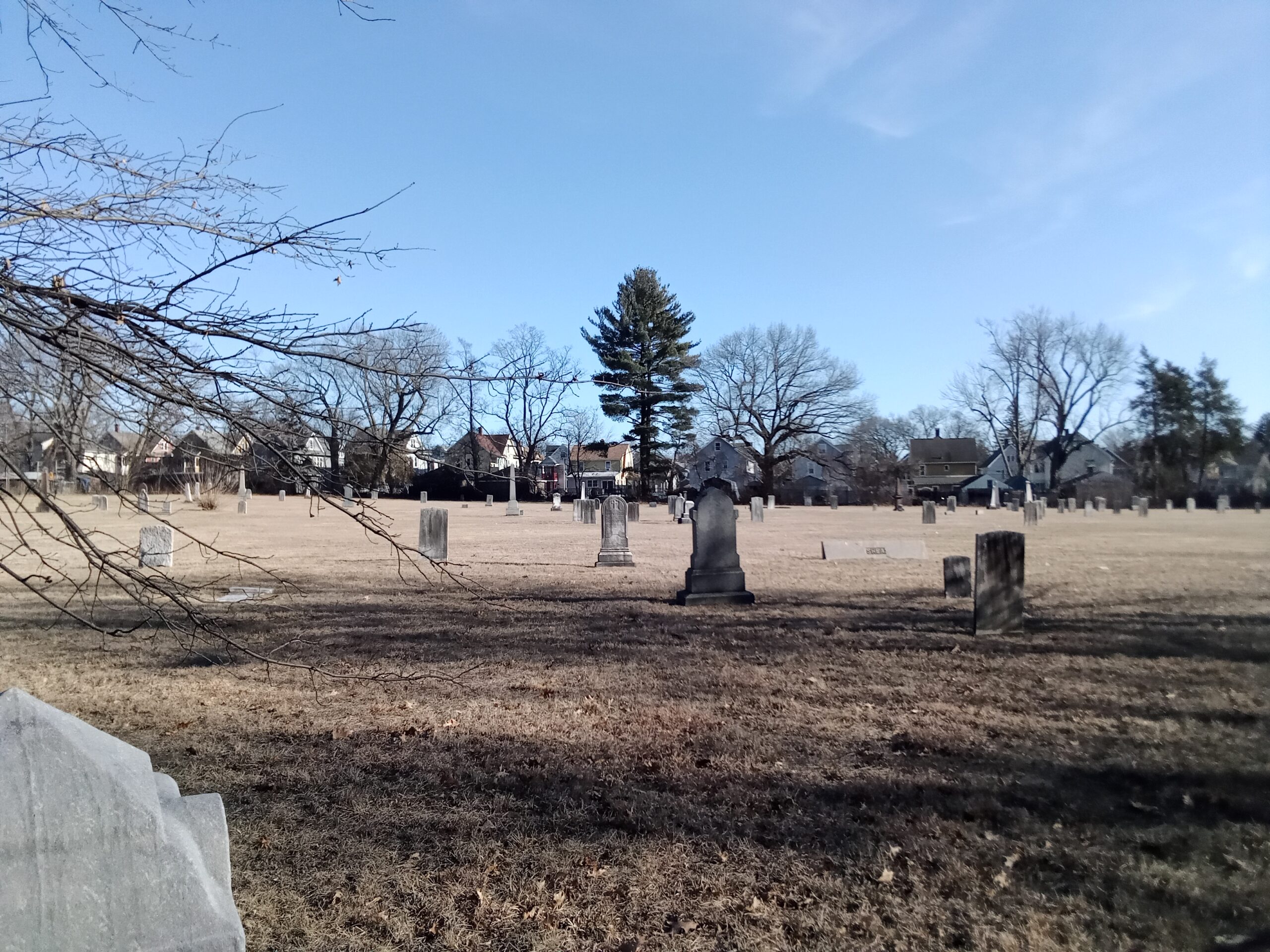
Saint Matthew’s Cemetery is the oldest Catholic cemetery in Western Massachusetts. It is a diocesan cemetery of the Springfield Catholic Diocese. It was established in 1845 as a parish cemetery for the Saint Matthew’s Church of Chicopee. This church was in the Cabotville section of Springfield until 1849 when Cabotville became the town of Chicopee. Catholics that died in Western Massachusetts before 1845 would have been carried in train to the Boston area to be buried.
This cemetery can hold 8000 burial and it thought to be filled. Notice that there are about only 400 names on the scarce amount of stones. Paupers could not afford stones.
The Saint Matthew Parish was started in 1840. It was the first Catholic church in Western Massachusetts and as such would have served all Catholics of Western Massachusetts. The Saint Matthew Church was built as a wooden church in 1843. It would be replaced as a parish and as a church in 1859 when Holy Name Church was built.
